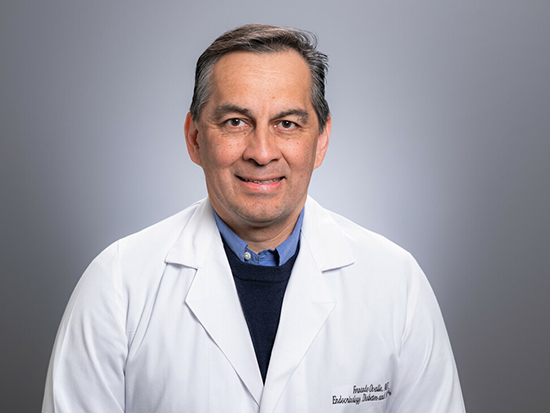Usually, a diabetes diagnosis begins with a label: either Type 1 or Type 2 diabetes. Patients with diabetes are typically assigned one of these two labels and then treated accordingly.
But UAB endocrinologist Fernando Ovalle, M.D., says diabetes experts are now pushing for more specific diagnoses. The benefits include more precise treatments for patients, fewer doctor visits and potentially reduced health care expenditures.
Ovalle is an associate director at the UAB Comprehensive Diabetes Center and the director of the Division of Endocrinology, Diabetes, and Metabolism.
No two patients look the same
“No two diabetes patients looks the same, even if they both have Type 2 diabetes,” Ovalle said. “A growing number of clinicians, researchers and diabetes organizations are pushing to start adding subtypes of diabetes to patients’ initial diagnoses.”
Type 1 diabetes was previously known as juvenile diabetes, since a substantial number of those with Type 1 were typically recognized in childhood. However, clinicians no longer use that term since around 50 percent of those with Type 1 diabetes are diagnosed after age 20, according to Ovalle.
Type 2 diabetes normally develops later in life and can be related to lifestyle choices like diet and exercise. A family history of Type 2 diabetes plays a large role in who is predisposed to the disease.
In all diabetes forms, pancreatic beta cells are either not performing at full function or are largely destroyed. Since pancreatic beta cells produce insulin, which is responsible for regulating blood sugar, this means that those with diabetes often require supplemental insulin to control their blood sugar. The pancreas does secrete more than just insulin, but insulin injections are most commonly used to treat those with diabetes.

